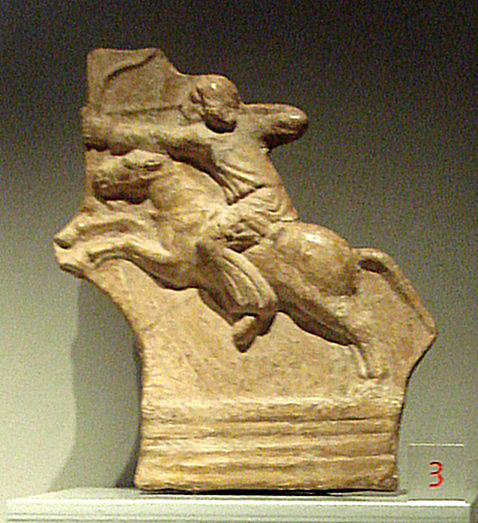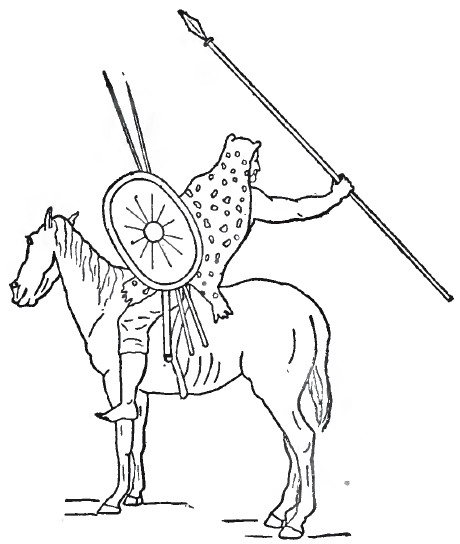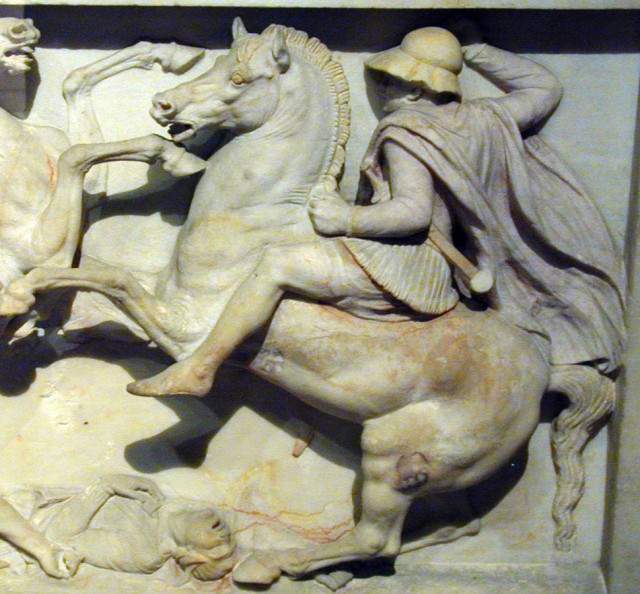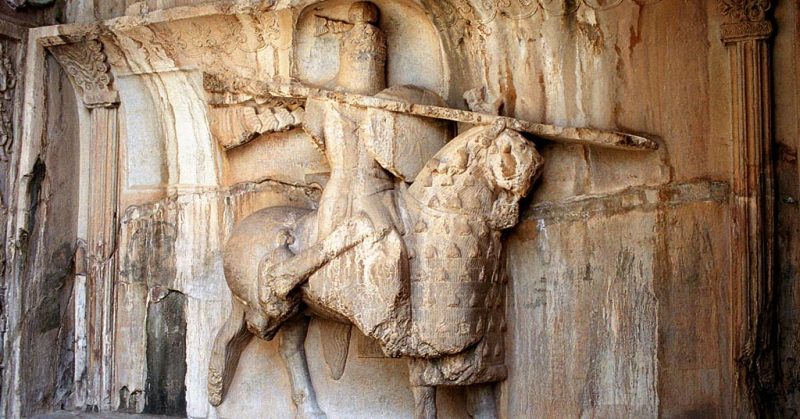Prior to gunpowder and efficient pike squares, cavalry had a key impact on the battlefield. Cavalry was utilized differently based on their training, equipment, and commander’s choice; they could be recon units, mobile skirmishers, light attack units, hand to hand anti-cavalry focused or be massive wedges hoping to charge through and break formations.
Some ancient elite cavalry forces had certain advantages that allowed them to reign supreme on most battlefields. Of course, there are many skilled units left off this list, feel free to mention which cavalry you think is elite in the comments.
Cataphracts
While horse archery required great natural skill by the rider, Cataphracts requited exceptional horses to carry their own armor in addition to the armored rider. Selective breeding for such horses starts again near Parthia and modern day Iran in Central Asia and the Near East. Cataphracts seem to have been in early use from Iran to Turkey but spread to the Black Sea coast and even China. Eventually, they would be copied by the Byzantines forming the inspiration for the typical medieval knight.
Horses, being larger and more muscled than humans, could absorb many wounds that might be fatal to humans, but they were still easy targets for archers and infantry. Placing heavy armor on a large and well-trained horse allowed an equally armored rider to essentially ignore many types of attacks and charge straight into an enemy formation with little fear.
A basic Cataphract would wear mail armor from head to toe with a solid plate helmet, the horse matching with a plate resting along the head and armor skirting down to the knees. Better equipped Cataphracts would have layered scale armor and rudimentary plate armor in addition to mail armor while giving their mount additional plates including possible breast plates.
Perhaps the most polished of the Cataphracts were the Sassanid Persian varieties. In addition to being heavily armored, they were also heavily armed. Many carried a long, heavy lance for impactful charges as well as a sword or more often maces, useful if engaging other heavily armored units.
Some, including Sassanid Cataphracts, carried bows to fire one or two volleys before closing with a charge. If a rider was as skilled as horse archers so that he could steer with no hands, then he might be equipped with a shield or even wield two weapons.
Cataphracts were shock troops who were unique in that they could charge, regroup and charge again, or they could stay and fight after a charge knowing that their heavy armor afforded them protection even when immobile. To counter Cataphracts it often took extremely agile troops resorting to brave attempts to get underneath horses to stab their vulnerable abdomens. Short of achieving that, many forces simply had to run before another charge was organized.
Parthian Horse Archers

The status of elite horse archers could easily be bestowed upon the Scythians, Sarmatians or the Mongols, all making the best out of vast expanses of plains, but some of the earliest elites were the Parthian Horse archers. Most horses are led by reins, but firing a bow requires two hands, so Parthian horse archers required great skill in controlling their mounts. This difficulty may be one reason that horse archery was not more prevalent in the ancient world and why chariot firing platforms emerged earlier than large-scale horse archery.
The tactics of horse archers were to relentlessly harass an enemy and goad them into a futile pursuit, string them out for a charge or simply exhausting them. They often had minor impacts that caused little harm, but with large contingents and enough ammunition they could almost single-handedly win a battle.
One such occasion was the disastrous Roman defeat at Carrhae. The Roman’s strength was their infantry, but they could do nothing about the scores of Parthian horse archers peppering their formations. Arrows rarely do the amount of damage portrayed in movies that show waves of infantry falling over to a single volley. In reality, it took steady volleys to reduce numbers through deaths and compounding injuries, something that the Parthians could do at Carrhae as they had brought extra supplies of arrows and their archers were able to stay out of range fairly easily.
At Carrhae and in many other battles the Parthians demonstrated the ability to fire behind them while galloping away. This skill shot added yet another volley of arrows to the total, and it turned into a phrase known today as taking a “parting (Parthian) shot.” The Parthians had varying degrees of success, but ultimately gave way to other horse archer units and against heavy infantry with supporting archers and light cavalry, they were much less effective.
Numidian Cavalry

Numidia was a large open area of northern Africa home to many tribal groups. In a wide and dry place, the Numidians relied on horses to get around and horsemanship was as natural to Numidians as walking. As mentioned, control over one’s horse was a key trait not to be undervalued, and the Numidians may have been the most naturally talented riders in the Mediterranean. Rather than using reins or saddles, Numidians went into battle bareback and used a braided rope wrapped snug around the neck of their mount for control. They also seemed to use their voice quite effectively for additional control.
Numidian cavalry saw their best and most documented moments as mercenaries and allies during the Second Punic War, chiefly being employed by Hannibal. Wearing just light tunics and armed with simple throwing and thrusting javelins, the Numidians were as light as cavalry could be yet time and again they were tasked with heavy assignments and completed them with flying colors.
At Cannae, it was the lesser numbered Numidians who held the Roman’s left cavalry flank while Hannibal’s double-sized left cavalry overpowered the Romans and came in for an encirclement. Light cavalry is almost never tasked with holding ground but they did so during some of the most crucial maneuvers of Hannibal’s campaign.
The Numidians served with distinction against Hannibal as well. When Scipio gained their allegiance they sent aid to his army prior to the battle of Zama. After putting Hannibal’s cavalry to flight, the Numidians showed exceptional discipline by not over pursuing, not raiding the enemy camp, but by turning and charging the rear of Hannibal’s infantry to turn the tides of a battle that could have gone in either direction. Such discipline was exceptionally rare in tribally organized cavalry.
The Numidians defied stereotypes by being the lightest of the cavalry able to hold down the toughest of battlefield assignments and showed levels of discipline only seen in hardened professional armies.
Companion Cavalry

Alexander the Great had the advantage of a mixed army; the core base was the phalanx, but they were supported by specifically trained light and heavy troops. In Alexandrian battles, the phalanx was the anvil that held the enemy while his elite Companion cavalry was the hammer that drove home the victory.
Greek and later Roman cavalry were notoriously weak and relegated themselves to certain victory charges and chasing defeated troops. Philip and Alexander’s professional army turned the tables and trained and equipped heavy cavalry units that would escort and protect the general while being able to drive deep into the enemy wherever needed.
Like Cataphracts, and likely a large influence for the increased development of Cataphracts, Companion cavalry were heavily armored with equipment similar to hoplites, heavy linen cuirasses, helmets, greaves and a long lance for charging complimented by a sword.
Companion Cavalry were among the first cavalry units to actively seek out hand to hand combat and employed a wedge formation that broke apart formations and often resulted in quick routs, particularly if employed against enemy cavalry who often shied away at sustained hand to hand combat.
The Companions were personally led by Alexander and their speed combined with their ability to quickly engage and rout enemies made them vital to his victories, especially at Gaugamela where the Companions routed Darius and his royal guard, turned and drove their wedge through the best heavy cavalry Persia had to offer, and finally saved the left flank of infantry from certain annihilation.
The role and importance of cavalry changed often in the ancient world, but the impact of these elite cavalry units won battles and secured Empires and legacies. Exceptional horsemanship combined with effective equipment and tactics led to these cavalry units making a lasting impact for themselves as some of the best ever.
By Willian Mclaughlin for War History Online
